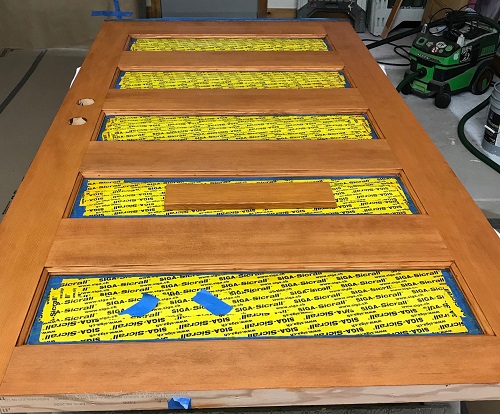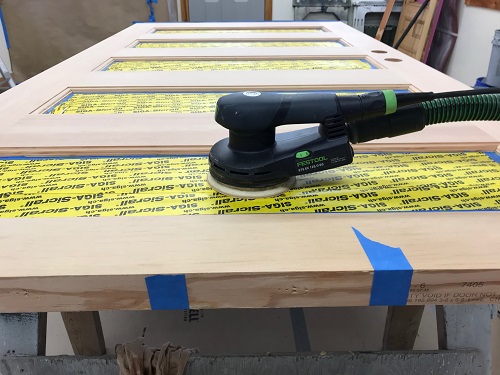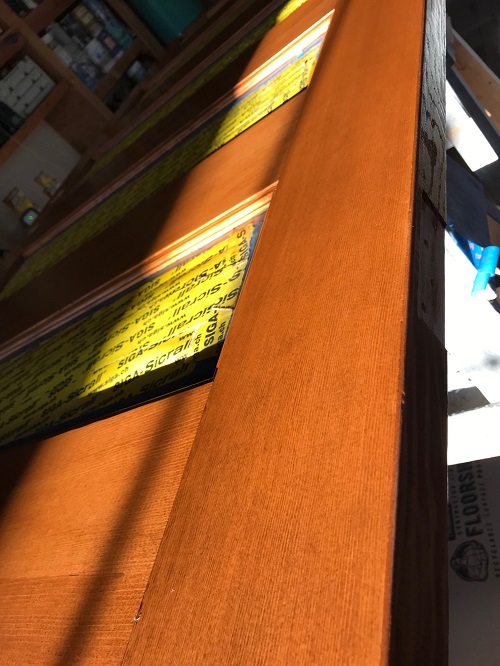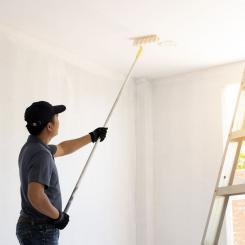Wood Snobs
Time-tested strategies for being the top dog in custom stains
12 October, 2021
Time-tested strategies for being the top dog in custom stains
12 October, 2021

While one trend in the residential paint world in recent years has been converting dated stain, grade items to paint-grade—the great kitchen cabinet rage of recent years— there are still homeowners and architectural features that call for custom staingrade and clear finishes.
As a “wood snob” for life, I tend to get the first call on a lot of those opportunities in my market. I do still love fine finishing with stain, and I am fortunate to have the shop facilities in which to do it. These situations can be for either interior or exterior items, with exterior being more common. So, not only do items have to look furniture grade, but they also have to perform with adhesion and durability in some harsh Vermont weather exposures.
If you have been looking for socially distant niche finishing opportunities in the past year, this is one to consider. Understand that it is not for the faint of heart. There is some risk, but the rewards can certainly justify it. Recently, I completed a complex finish on a new exterior door in my shop, which caused me to reflect on how I do what I do. Here I will share a couple of pages from my playbook on that type of finishing.
Things to know

Exterior stain-grade finishing is usually thought of as a production game. Staining the siding on a house or oiling a deck are typical applications, but architectural features are best served by working on a smaller scale using higher-grade products. As I have long said, product drives process, so it is important to clearly know what your customer seeks for a look. This is a subjective art. I require pictures at the very least and often request samples of actual wood in the tone the customer desires. It is not enough for you or a customer to say, “Something in a dark mahogany tone.” That can mean 100 things.
Knowledge of wood species comes into play here—big time. A stain tone will look very different on pine compared with fir, butternut or hemlock. Sampling is absolutely key. Proper stain tone sampling needs to be done with discipline—slowly, deliberately and with good labeling. I have jammed out a dozen stain samples in the past and hit on a winner only to realize I hadn’t labeled them! One thing that many finishers overlook is the critical importance of prepping the samples exactly the way you will prep the finished piece. For example, if you are sampling for a stain match to be applied to a new fir exterior door, it is most helpful to use fir for your sampling. Further, if you know that you always sand to 150 grit prior to applying your preferred stain product, sand your sample to 150.
There will be surprises

As with anything in the life of a finisher, things don’t always go as planned. One reality to accept right upfront is that even pricy custom doors are not going to arrive in your shop flawless and ready for your magic touch. Inspect the piece on arrival. Use strong LED lighting and pop the grain with a damp rag. When wood surfaces are moderately damp and well lit, you have a better chance of seeing what is really happening on a wood surface; you will be amazed what shows up in pre-surgical inspection. Fingerprints, scuff marks, compression wounds, veneer cracks ... If you find an excess of egregious cosmetic flaws, sometimes it is necessary to reject a piece. This is never good news to deliver, as it can take six to eight weeks to get another custom door.
The reality is that door manufacturers do not make doors—even those pricy architectural special-order doors—to what a pro wood finisher would consider “stain-grade standard.” That is because stain-grade is niche. The majority of the finished world is painted. And, of course, manufacturers can get away with a lot more in that realm, as paint-grade finishers have a much more user-friendly bag of cosmetic tricks and products to draw from. This is not to say that paint-grade custom finishing of architectural features is not just as much of an art as stain-grade—it certainly is. But stain-grade is far less forgiving.
For me, I have all these things in play at once, well in advance of starting a finish. I have a sample match in progress, and I am inspecting the piece to be finished. Think furniture- or cabinet-grade levels of scrutiny and expectation.
Assume nothing

Communication with the customer is key. There is no such thing as perfection in finishing—we all know that. You can chase perfection all day long, coming up empty-handed, overpriced and slow to deliver. I have written over the years about how easy it is to go backward down a rabbit hole chasing something that doesn’t exist. Avoid this temptation. Ultimately, the customer relies on your expertise. You are the expert. Experts educate. You are not creating perfection, just the illusion of it.
The best way to establish and enforce your standard—that which forms your reputation—is by educating customers. That is very easy to do these days. You can text pictures, explain visuals and ask questions to find the right balance between what you think is appropriate.
If this sounds a bit like wallpaper stripping, it can be, in the sense that in certain types of work, you just don’t know how it will go until you get into it. Show the customer what you are finding in their piece. Insist on things that are nonnegotiable, empower them with choice on lower-order decisions. For me, non-negotiables in custom finishing include materials, turnaround time and final say on the aesthetic we will produce.
Go backward fast
One true measure of a pro finisher is what he or she does when in trouble in a task. How do you back out of a scene that is going wrong, or is the best way out to go further in? These are the questions that a good finisher is asking him or herself through the whole process. On my recent project, I had a little surprise pop up after I had gone through my usual diligent ritual. There was a slight compression wound in the middle of the door that eluded all aspects of my inspection and prep. It would only show up under stain … it was about the size of a healthy French fry, and it was lying right across the grain.
The worst part of a situation like this is that you have to wait about 48 hours before attempting correction. You have to force yourself to be patient and use the time wisely to formulate your plan. When the time is right to correct the problem, do it with passion and precision. Often, you only get one shot. If you don’t go far enough, the door will probably never be right. If you go too far, you can punch through a veneer or dish out a surface.

That is one of the fun parts of this type of work. The types of curveballs that get thrown at you are often things that you have not experienced before. Drawing upon all your accumulated skills, knowledge, tools and experience to solve problems for customers is a great way to position yourself in your market.
Small niche service offerings can be great “gateway jobs” to help you do repeat business with customers who like nice, custom items and are willing to pay for them.
Scott Burt is a painting contractor and senior editor of American Painting Contractor.




Add new comment